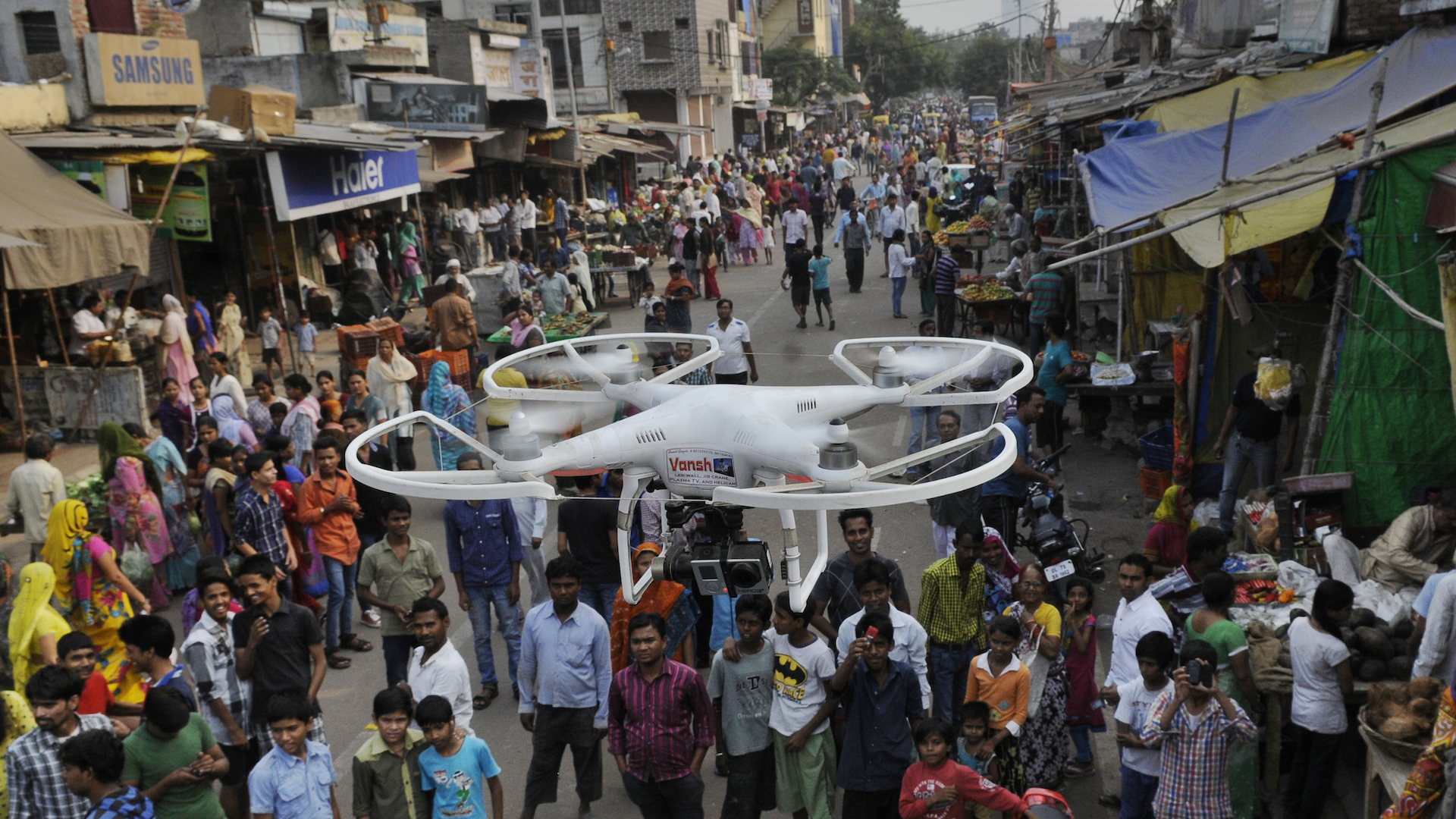

We may earn revenue from the products available on this page and participate in affiliate programs. Learn more ›
India is one of the most populous countries in the world, second only to China, and is, therefore, more drawn toward crowd-management solutions in public places than most other nations. According to a governmental press release, Indian Railways, the country’s primary state-owned national railroad system, completed a trial last week in which camera-drones were deployed in three prioritized railroad areas across the country. The statement makes it clear the government is eager to test the potential efficacy of standardizing the implementation of unmanned aerial vehicles across the country’s railroad stations, particularly during festival seasons.
The government’s Press Information Bureau issued a statement on Monday, regarding its Ministry of Railways and these prospective new camera-drone implementations. The end-goal here is “to enhance safety and efficiency in train operations,” and that “it will help in various activities especially project monitoring and maintenance of tracks and other railway infrastructure.” In other words, the government has noticed how aerial monitoring via drone could boost the amount of functional data streamed to railroad-monitoring hubs, which would in turn help assess how one could do better at managing and regulating not only crowds, but the infrastructure itself.
The release makes it clear that the country’s festival seasons are a definite motivating factor in implementing these drones. Every year, millions of citizens migrate throughout the country using railroad infrastructure, and amassing useful data as to how to optimize this activity is certainly a rational and affordable response when considering drones as the tool to do so. After the comments on how camera-drones could help prevent the interlocking of trains, conflicting movements on tracks like junctions and crossings, it points toward the increase of passengers at certain points of the year.
The press release claims that this drone implementation “shall also be used to assess preparedness of Non-Interlocking (NI) works, crowd management during fairs and melas, to identify scrap and also for aerial survey of station yards.” It’s clear, here, that the government has noticed just how beneficial a tool the camera-equipped UAV can be. “It is going to be instrumental in providing real time inputs related to safety and maintenance of tracks and other railway infrastructure,” the statement adds.
West Central Railways was the first to utilize UAVs for such purposes. The three test-site divisions of the camera drones are located in Jabalpur, Bhopal, and Kota. The statement mentions plans to expand drone use to more lines and division, as well as “Important Bridge inspections and Monsoon [sic] preparedness.” It seems clear that this particular infrastructure in India could greatly benefit from deploying camera-drones throughout its most visited and busiest railroad spots. By collecting as much data as possible with, tech that is extraordinarily affordable these days, the list of possible solutions and approaches will grow, too.
